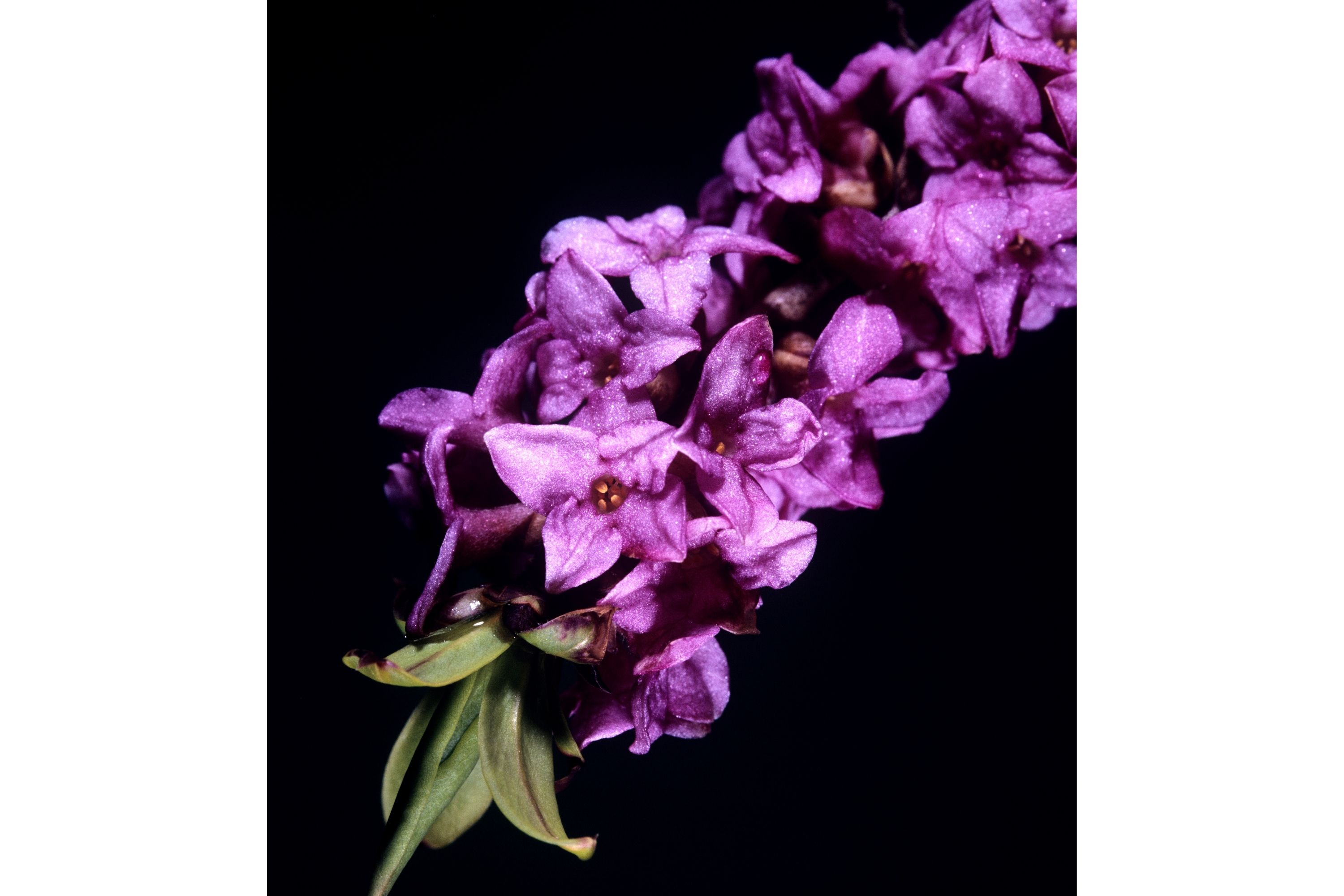Daphne genkwa
(Daphne genkwa)

Description
Daphne genkwa is a deciduous shrub and one of the 50 fundamental herbs used in traditional Chinese medicine, where it has the name yuán huā. The plant was discovered by the prolific British plant collector Charles Maries (1851-1902). In addition to the nominate subspecies, Daphne genkwa subsp. genkwa, two further subspecies are recognized. Both are treated as separate species by the Flora of China. Daphne genkwa subsp. jinzhaiensis (D.C.Zhang & J.Z.Shao) Halda (syn. Daphne jinzhaiensis) differs from subsp. genkwa in its terminal 3–5-flowered racemes, each flower having a tube 10–12 mm long. It is found in Anhui, China. Daphne genkwa subsp. leishanensis (H.F.Zhou ex C.Yung Chang) Halda (syn. Daphne leishanensis) differs from subsp. genkwa having blackish-purple older branches and reddish flowers 6–7 mm long. It is found in Guizhou, China, where it grows on rocky slopes with bushes at altitudes ranging from 900 to 1200 m. Daphne is a genus of between 70 and 95 species of deciduous and evergreen shrubs in the family Thymelaeaceae, native to Asia, Europe and north Africa. They are noted for their scented flowers and often brightly coloured berries. Two species are used to make paper. Many species are grown in gardens as ornamental plants; the smaller species are often used in rock gardens. All parts of daphnes are poisonous, especially the berries. Daphne species are shrubs, with upright or prostrate stems. Upright species may grow to 1.5 m (5 ft). Their leaves are undivided, mostly arranged alternately (although opposite in D. genkwa), and have short petioles (stalks). The leaves tend to be clustered towards the end of the stems and are of different shapes, although always longer than wide. The leaf surface may be smooth (glabrous) or hairy. Many species flower in late winter or very early spring. The flowers are grouped into clusters (inflorescences), either in the leaf axils towards the end of the stems or forming terminal heads. The inflorescences lack bracts. Individual flowers completely lack petals and are formed by four (rarely five) petaloid sepals, tubular at the base with free lobes at the apex. They range in colour from white, greenish yellow or yellow to bright pink and purple. Most of the evergreen species have greenish flowers, while the deciduous species tend to have pink flowers.
Taxonomic tree:







